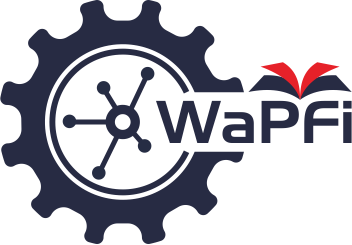A bibliometric review of STEM-based digital modules from 2014 to 2024
Abstract
This study aimed to explore research trends in STEM-based digital modules within the field of physics education from 2014 to 2024, utilizing a bibliometric analysis approach. The analysis was conducted using data extracted from the Scopus database, which provided a comprehensive overview of the scientific output and the development of research in this domain. Key contributors, institutions, countries, and frequently cited publications were identified to understand the intellectual structure of the field. The findings revealed a significant annual growth rate of 9.6%, with 96 documents authored by 367 researchers across 72 sources. Germany, the United States, and China were the leading contributors in terms of citations, while Nanyang Technological University and Universiti Teknologi Malaysia were among the most active institutions in STEM-related physics research. The keyword analysis highlighted terms such as "students," "engineering education," and "e-learning" as major topics of focus. Additionally, the IEEE Annual Conference and Journal of Physics: Conference Series were identified as the top publication sources. Overall, this study sheds light on the evolving landscape of STEM in physics education, offering critical insights into the current research trends and identifying potential areas for future academic exploration and collaboration.
Downloads
References
Akis, A. P. (2022). Using Arduino in Science, Technology, Engineering, and Mathematics (STEM) Education: Bibliometric Analysis. 35(2), 73–84.
Bao, L., & Koenig, K. (2019). Physics education research for 21 st century learning. Disciplinary and Interdisciplinary Science Education Research, 1–12.
Büyükkidik, S. (2022). A Bibliometric Analysis : A Tutorial for the Bibliometrix Package in R Using IRT Literature. 13(3), 164–193.
Conradty, C., Sotiriou, S. A., & Bogner, F. X. (2020). How Creativity in STEAM Modules Intervenes with Self-E ffi cacy and Motivation. Education Sciences, 10.
De, C., Kumar, B., Nagy, G., & Szentesi, S. (2021). education sciences Evolution of New Approaches in Pedagogy and STEM with.
Donthu, N., Kumar, S., Mukherjee, D., Pandey, N., & Marc, W. (2021). How to conduct a bibliometric analysis : An overview and guidelines. Journal of Business Research, 133(April), 285–296. https://doi.org/10.1016/j.jbusres.2021.04.070
Dwiyantoro. (2020). Tren Topik Penelitian Jurnal Terakreditasi Peringkat Sinta 2 Bidang Ilmu Perpustakaan dan Informasi di Indonesia Periode 2013-2019 ( Analisis Subjek Menggunakan Pendekatan Bibliometrik Co-Word ). 27(152), 1–13.
Hebebci, M. T. (2022). The Effects of Integrated STEM Education Practices on Problem Solving Skills , Scientific Creativity , and Critical Thinking Dispositions Ertuğrul Usta. 9(November), 358–379.
Hosseini, H., Hartt, M., & Mostafapour, M. (2018). Learning IS Child ’ s Play : Game-Based Learning in Computer Science Education. ACM Transactions on Computing Education (TOCE), 1(1).
Hu, W., & Guo, X. (2021). Toward the Development of Key Competencies : A Conceptual Framework for the STEM Curriculum Design and a Case Study. 6(October), 1–12. https://doi.org/10.3389/feduc.2021.684265
Huang, Cui, Yang, C., Wang, S., Wu, W., Su, J., & Liang, C. (2019). Evolution of Topics in Education Research: A Systematic Review Using Bibliometric Analysis. Educational Review.
Irekpita, M., Mohd, S., Samsudin, A., & Yakob, N. (2020). Effect of design thinking approach on students ’ achievement in some selected physics concepts in the context of STEM learning. International Journal of Technology and Design Education, 0123456789. https://doi.org/10.1007/s10798-020-09601-1
Johnson, C. C., Peters-Burton, E. E., & Moore, T. J. (2016). STEM road map: a framework for integrated STEM education. Routledge.
Kaya, V. H., & Elster, D. (2018). Environmental Science, Technology, Engineering, and Mathematics Pedagogical Content Knowledge: Teacher’s Professional Development as Environmental Science, Technology, Engineering, and Mathematics Literate Individuals in the Light of Experts’ Opinions#. Science Education International, 30(1).
Khalil, N. M., & Osman, K. (2017). STEM-21CS Module : Fostering 21 st Century Skills through Integrated STEM. 3(3), 225–233.
Kumar, S., Lim, W. M., Pandey, N., & Westland, J. C. (2021). 20 years of Electronic Commerce Research. In Electronic Commerce Research (Vol. 21, Issue 1). Springer US. https://doi.org/10.1007/s10660-021-09464-1
Lampropoulos, G. (2023). Augmented Reality and Artificial Intelligence in Education: Toward Immersive Intelligent Tutoring Systems. In Augmented Reality and Artificial Intelligence: The Fusion of Advanced Technologies; Springer Nature: Cham, 137–146.
Li, J., & Hale, A. (2022). Output distributions and topic maps of safety related journals. Safety Science, 82(February 2016), 236–244. https://doi.org/10.1016/j.ssci.2015.09.004
Mohr-schroeder, M. (2015). Stem Education : Understanding the Changing Landscape A Practice-based Model of STEM Teaching STEM Students on the Stage ( SOS ) TM Alpaslan Sahin (Issue January). https://doi.org/10.1007/978-94-6300-019-2
Moral-muñoz, J. A., Herrera-viedma, E., Santisteban-espejo, A., Cobo, M. J., Herrera-viedma, E., Santisteban-espejo, A., & Cobo, M. J. (2020). Software tools for conducting bibliometric analysis in science : An up- to-date review. 1–20.
Muzakki, A., Wibowo, F. C., & Astra, I. M. (2023). Exploring trends in augmented reality research for science education: A bibliometric mapping analysis. Prosiding Seminar Nasional Fisika, 2, 73–84.
Rahayu, R. N., Sensusiyati, Sutarno, & Sungkawa, I. (2021). Analisis bibliometri usaha mikro kecil menengah. INTELEKTIVA : JURNAL EKONOMI, SOSIAL & HUMANIORA, 2(11), 62–72.
Ruhyana, I. F., Nasbey, H., & Wibowo, F. C. (2023). Bibliometric analysis of STEAM in physics education: exploring scopus database on the last decades (2013-2023). Prosiding Seminar Nasional Fisika, 2(1), 145–154.
Saleh, S. (2014). Malaysian students ’ motivation towards Physics learning. 2(4), 223–232.
Susila, A. R., Wibowo, F. C., & Budi, E. (2023). Unveiling the evolution: A bibliometric analysis of physics learning website trends in the past 5 years. Prosiding Seminar Nasional Fisika, 2(1), 60–72.
Talan, T. (2021). Augmented Reality in STEM Education : Bibliometric Analysis To cite this article : Augmented Reality in STEM Education : Bibliometric Analysis.






